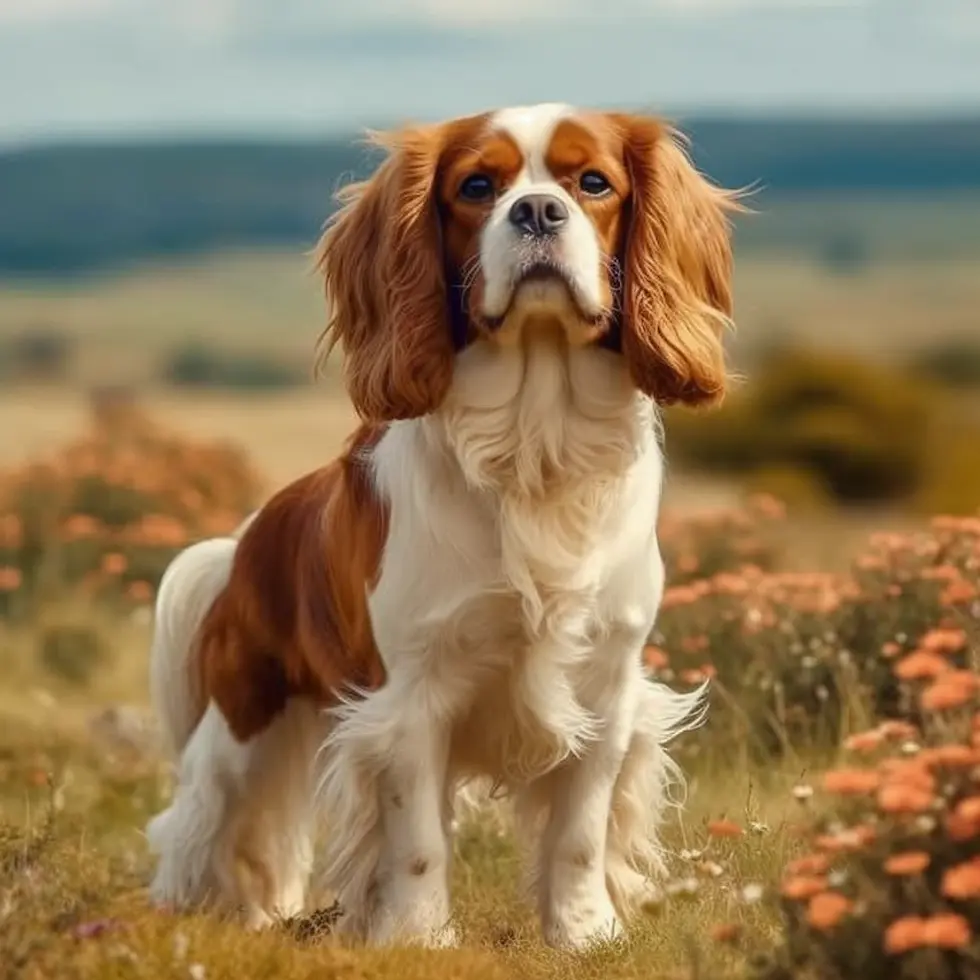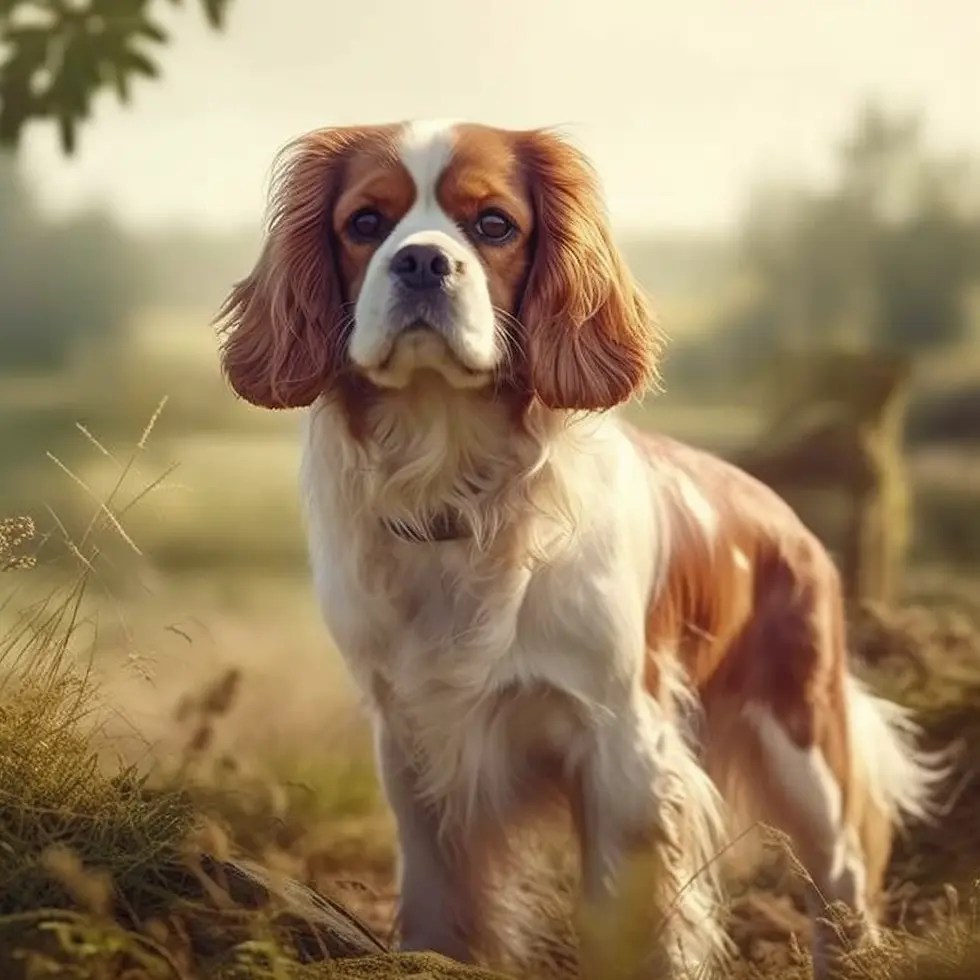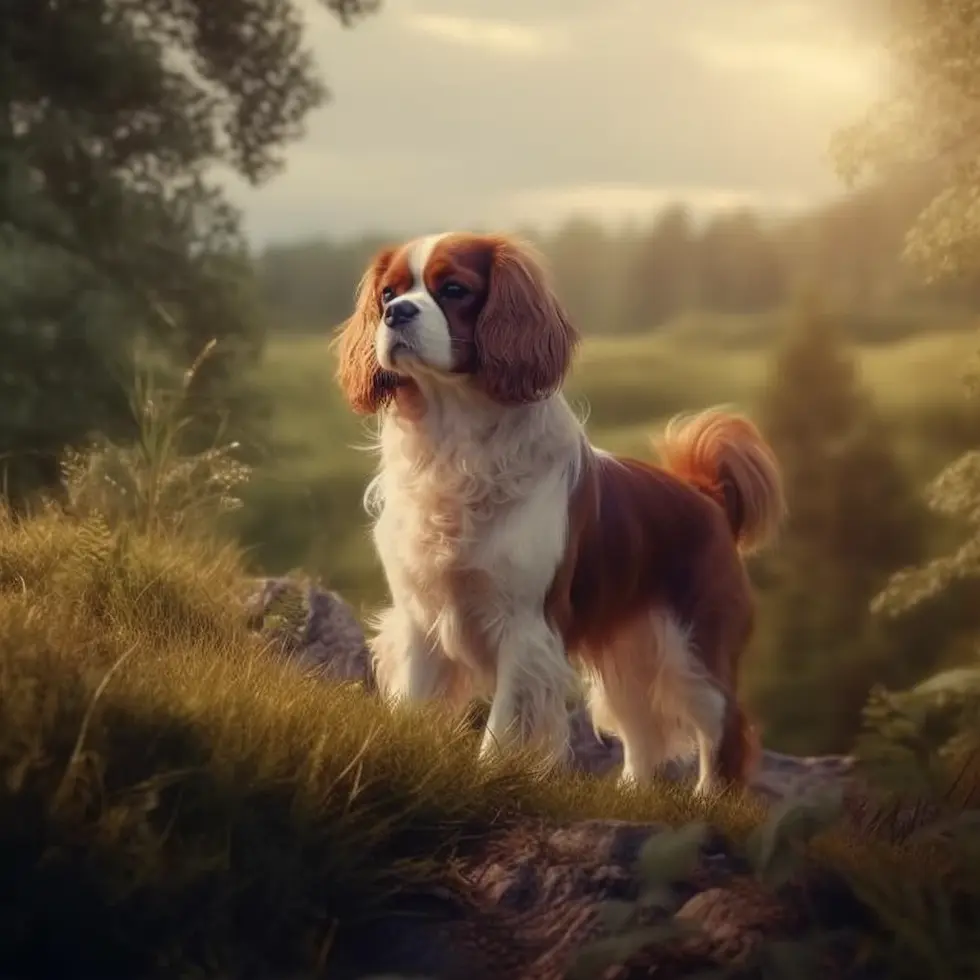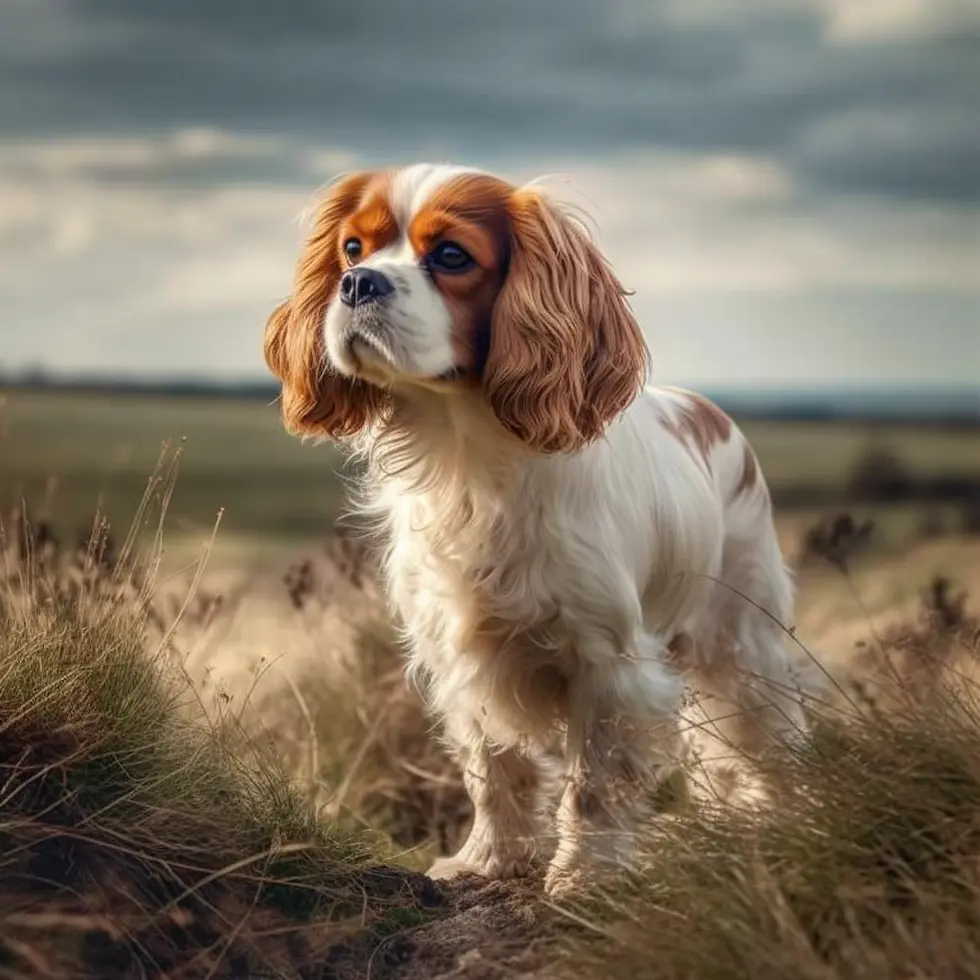The Cavalier King Charles Spaniel
Origin and Development:
The captivating tale of the Cavalier King Charles Spaniel begins in 17th-century England, where it was meticulously bred to be a noble companion. Originally intended for hunting, these dogs evolved into cherished members of aristocratic households. King Charles II’s affection for them earned the breed its regal name. Over time, the breed’s purpose shifted, focusing more on companionship, leading to its recognition as a distinct breed.

Appearance and Characteristics:
This breed boasts a small and elegant stature, adorned with a silky, lustrous coat and expressive, large eyes. Recognized in four enchanting colors—Blenheim, Tricolor, Black and Tan, and Ruby—the Cavalier King Charles Spaniel effortlessly blends into family life. Their adaptability makes them ideal companions, catering to families, seniors, and individuals with special needs.

Character and Temperament:
Social butterflies by nature, Cavalier King Charles Spaniels revel in human and animal companionship. Their patience and tolerance make them exceptional family dogs, despite their petite size. Bursting with energy, these Spaniels love outdoor play and exploration. Their intelligence and eagerness to learn contribute to their trainability. Known for their sensitivity, they also excel as therapy dogs.

Grooming and Health:
The breed’s crowning glory is its long, silky coat, demanding regular grooming to prevent matting and maintain its allure. Vigilance is key, especially with their ears, as they are prone to infections. However, beyond their enchanting appearance lies a vulnerability to genetic diseases such as heart conditions, eye problems, and syringomyelia —a spinal cord ailment. Regular vet check-ups and a keen eye for signs of illness are crucial for their well-being.
In conclusion, the Cavalier King Charles Spaniel is not just a dog; it’s a regal companion with a rich history, charming demeanor, and the ability to bring joy to any family.
